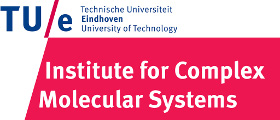Team:TU-Eindhoven/FNRPromotor
From 2013.igem.org



Contents |
FNR Promotor
To let the bacteria sense low oxygen concentrations, a FNR promotor was used in this research. The promotor that was chosen is not a default one, since it is a so called tandem promotor. That is, it contains two FNR binding sites. The kinetics of this promotor are therefore different than the promotor previously described in the Decoy Sites model. Here the necessary adaptations of the Decoy Model to account for this special promotor will be described.
Promotor Design
The promotor that was used in this research was taken from research by Barnard et al.BusbyFNRAnne M.L. Barnard, Jeffrey Green, and Stephen J.W. Busby, Transcription regulation by tandem-bound FNR at Escherichia coli promoters. Journal of bacteriology 185.20, 5993-6004 (2003). The research showed the promotor (FF(-91.5)FF(-41.5)) expresses an 1.8 times higher activity than the most commonly used single binding site FNR promotor (FF(-41.5)). From hereon the tandem FF(-91.5)FF(-41.5) promotor will be referred to as the FNR-tandem promotor and default FF(-41.5) will be called FNR-single promotor. The global design of the FNR-single and FNR-tandem promotor are displayed below:
-130 -120 -110 -100 -90 -80 -70 -60 -50 -40 -30 -20 -10 0
| | | | | | | | | | | | | |
(FNR-single) **********************************TTGAT****ATCAA**********************CATAAT*******
(FNR-tandem) **********************************TTGAT****ATCAA************************************TTGAT****ATCAA**********************CATAAT*******
(consensus sequences) ______________ ______________
The FNR consensus sequences contain two binding sites, each for one monomer of the FNR dimer.
The Model
When converting the knowledge about the FNR-tandem promotor to a model, it had to be kept in mind that there is very few measurement data of the promotor available. The only data that can be acquired are the binding and disscociation ratios of FNR to one consensus site and the relative activity of the FNR-tandem promotor with respect to the FNR-single promotor. The relative activity of the FNR-tandem promotor suggests that there is minimal hindrance between the two bound FNR proteins, but there also is no significant synergy. Using this information the tandem characteristics of the promotor were incorporated into the model. Hereto the following reactions were added:
Parameter Estimation
To estimate the Kon and Koff rates of a FNR consensus site, and thus - as described before - of the individual consensus sites in the FNR-tandem promotor. The data used for the parameter estimation of the two rates was acquired from research by Lazazzera et al.LazazzeraFNRB.A. Lazazzera, H. Beinert, N. Khoroshilova, M.C. Kennedy and P.J. Kiley, DNA Binding and Dimerization of the Fe–S-containing FNR Protein from Escherichia coli Are Regulated by Oxygen. The Journal OF Biological Chemistry 271, 2762-2768 (1996) (Fig. 4 of the article). The model was adapted to include promotors with just one consensus site (i.e. no PT or TPT states), as used in the paper. Furthermore, the right promotor concentration was set to 5 nM, which was the concentration used in assay. Hereafter, the values of Kon and Koff were optimized to minimize the error of the model output with respect to the measurement data. The optimal values of Kon and Koff were determined to be 0.0993 $M^{-1} s^{-1}$ and 0.00985 $s^{-1}$ respectively.
The next step is to estimate the activity of the promotor. Usually the activity is assumed to be proportional to the amount of bound promotor normalized to the total amount of promotor. In this case however, there are multiple bound states of the promotor that have to be taken into account, as shown in the equations of .
References
The source code of all models can be found here.
 "
"



